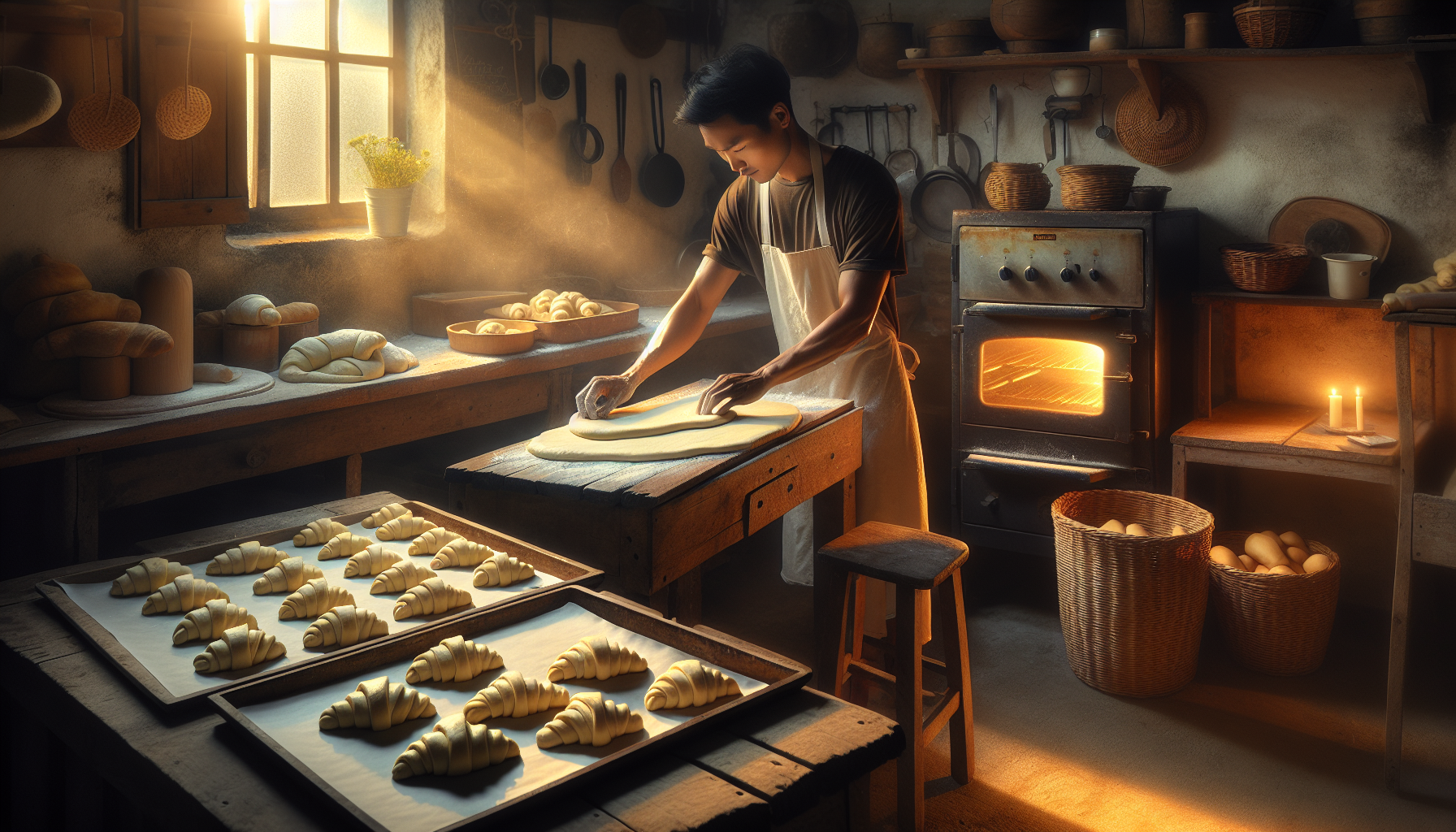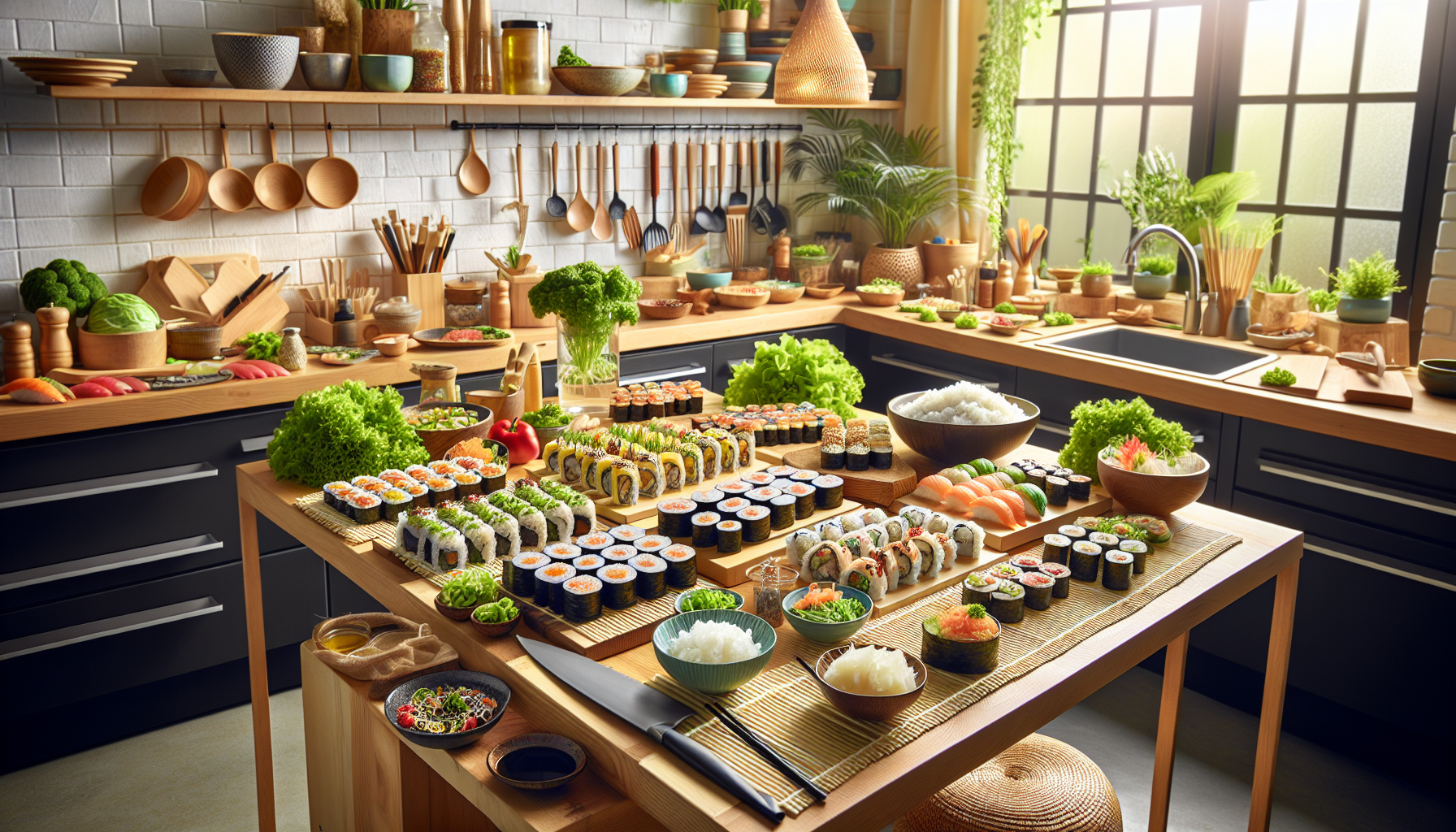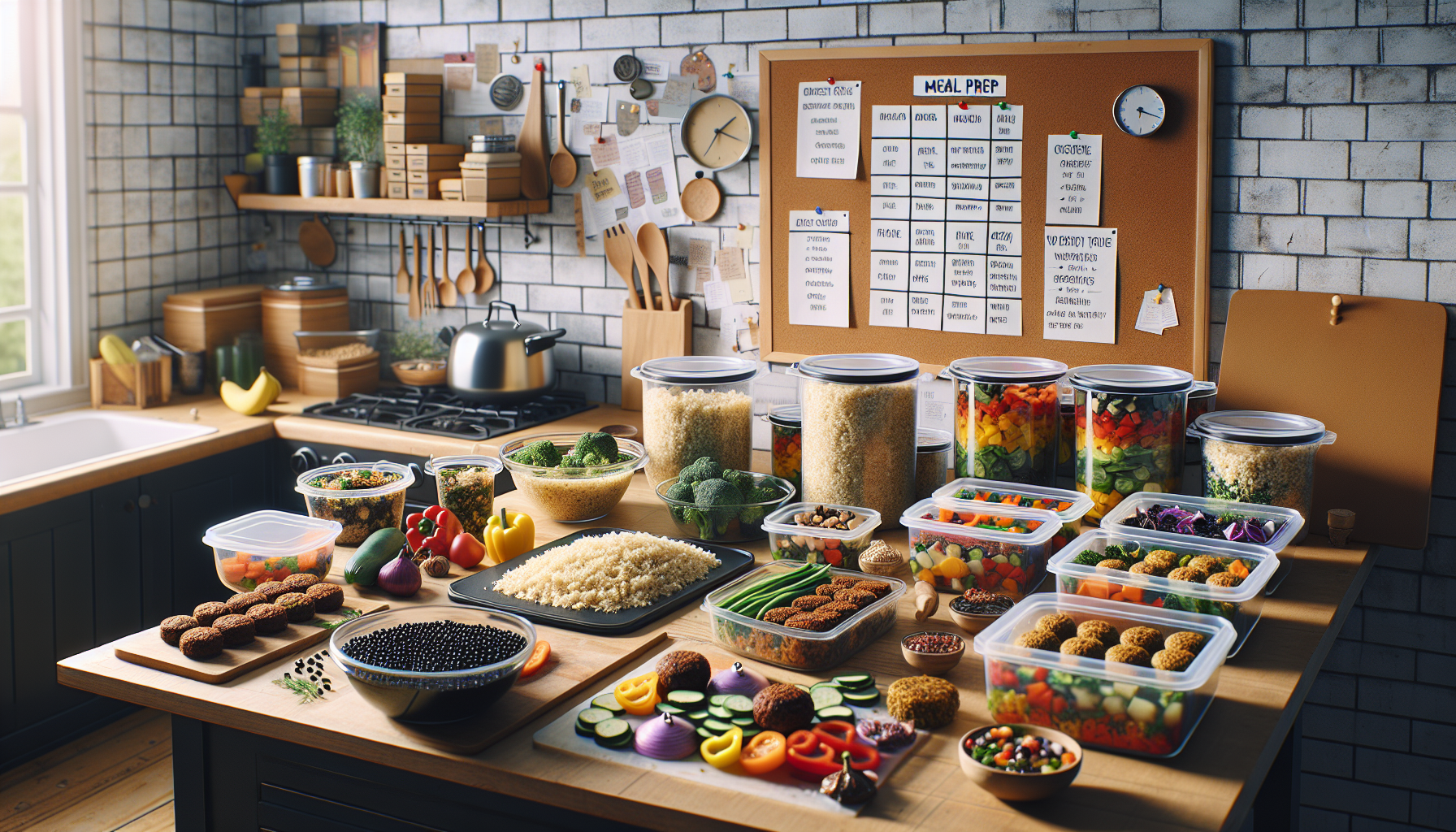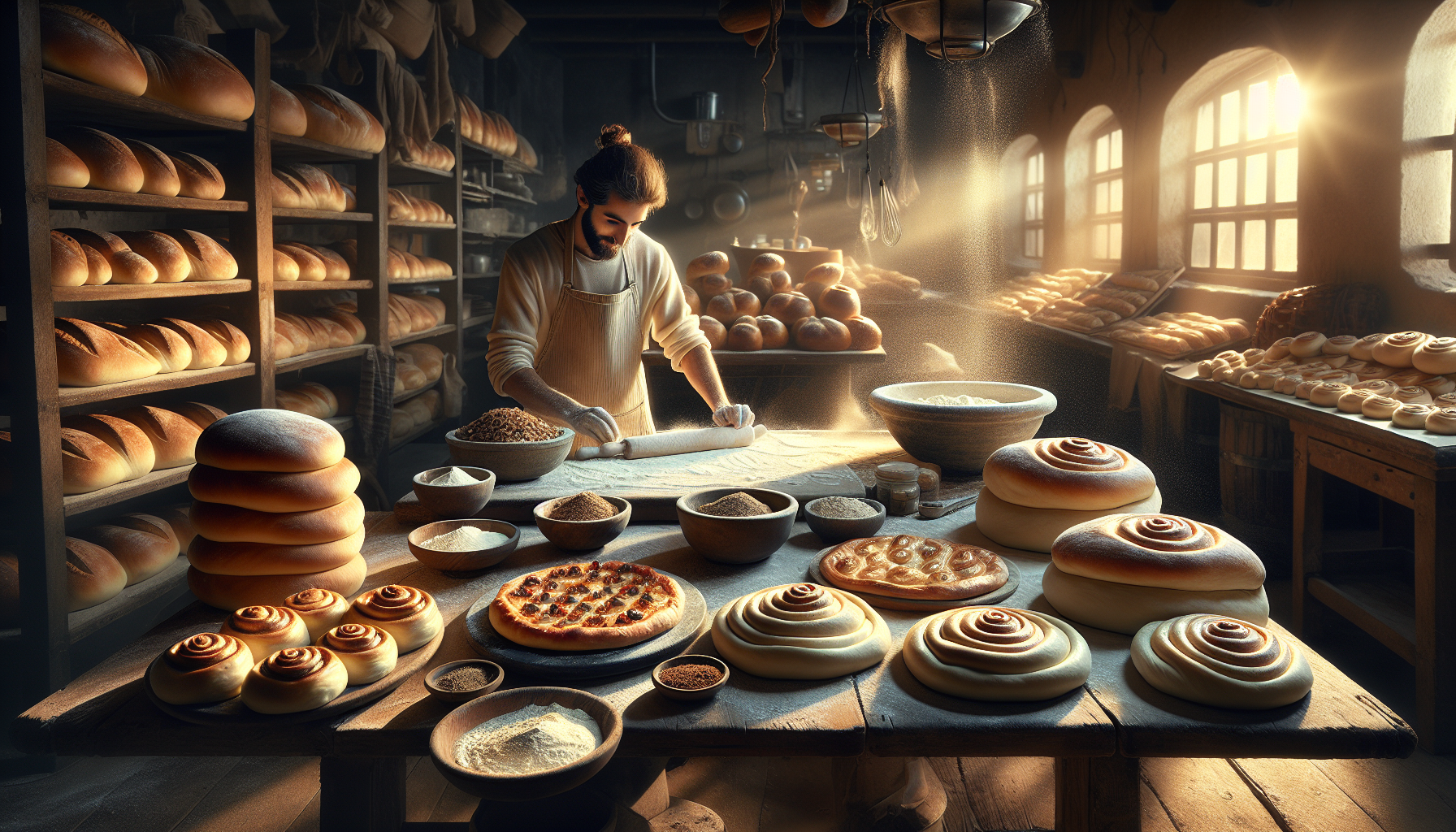Mastering the Art of French Macarons: A Beginner’s Guide is a comprehensive course designed to take you through the delicate journey of creating these esteemed confections from scratch. This course covers the foundational skills and nuances of making French macarons, including preparing the perfect meringue, mastering the macaronage technique, and achieving the ideal piping, baking, and filling of these delightful treats. Whether you’re a novice baker or looking to refine your macaron-making skills, this guide offers detailed insights and step-by-step instructions to ensure your success. Engage in the artistry and science behind French macarons, and embark on a baking adventure that promises to elevate your culinary prowess.
Lesson 1

Mastering the Art of French Macarons: A Beginner’s Guide
Embarking on the journey of mastering French macarons can be both exciting and daunting. French macarons, with their smooth tops, ruffled feet, and creamy filling, stand as the pinnacle of baking expertise for many enthusiasts. This guide aims to demystify the process, making it accessible for bakers at any skill level. Let’s dive into the fundamental steps necessary for creating these exquisite treats.
Understanding the French Macaron
Before we begin, it’s crucial to recognize what sets French macarons apart. Originating from France, these delicate confections are more than just cookies; they are a blend of precise technique, quality ingredients, and artistry. Comprising almond flour, sugar, and egg whites, the French macaron is known for its unique texture and wide range of flavors.
Ingredients and Tools You’ll Need
Gathering the right ingredients and tools is your first step towards macaron mastery:
- Almond flour: Ensures the distinctive chewy texture.
- Granulated sugar and confectioners’ sugar: Provides structure and sweetness.
- Egg whites: Acts as a leavening agent.
- Food coloring (optional): Gives macarons their vibrant appeal.
And for the tools:
- Electric mixer: Crucial for achieving stiff peaks in your meringue.
- Spatula: For the macaronage process, a crucial step in making macarons.
- Piping bag and round tip: For shaping the macarons.
- Oven thermometer: To ensure the right baking temperature.
Decoding Macaron Terminology
To master French macarons, understanding the key terms used in the process is essential:
- Macaronage: The technique of folding the dry ingredients into the meringue.
- Meringue: The whipped egg whites and sugar mixture that forms the base of the macaron batter.
- Piping: The process of shaping the macarons on the baking sheet.
- Maturation: The process where filled macarons are stored, allowing the flavors to meld together.
Becoming Familiar with the Basic Recipe and Process
At the heart of French macarons is a basic recipe that, once mastered, can be adapted with various flavors and fillings. The process involves creating a meringue, performing the macaronage, piping the shells, baking, and finally, filling. Each step requires attention to detail, patience, and practice.
Mastering the art of French macarons is a rewarding endeavor. Starting with these foundational steps will put you on the path to creating your own exquisite macarons. Remember, the key to success is practice, patience, and persistence.
Lesson 2

Perfecting Meringue and Macaronage for French Macarons
Delving deeper into the art of making French macarons, the mastery of meringue and macaronage stands as pivotal. These steps are essential for achieving the iconic smooth, crisp shell and the delightful chewiness French macarons are renowned for. This guide walks you through mastering these crucial stages, ensuring your French macarons turn out splendidly.
Mastering the Meringue
Achieving the perfect meringue is the foundation of great French macarons. The process begins with aged egg whites, which are whisked to incorporate air before sugar is gradually added. This stage is crucial for forming stiff, glossy peaks that hold their shape, a characteristic that will define your macaron’s texture. Remember, patience is key, and ensuring your meringue reaches the optimal stiffness without overbeating is essential.
Understanding Macaronage
Once you have your meringue ready, the macaronage process commences. This technique involves gently folding your almond flour and sugar mixture into the meringue. The goal here is to achieve a magma-like consistency—a smooth, flowing batter that forms a thick ribbon off the spatula. It’s a delicate balance; undermix, and you’ll have lumpy macarons, overmix, and they’ll spread too thin. Developing an eye for this stage comes with practice, so don’t be discouraged by initial hiccups.
Precise Ingredients for Successful Macarons
- Almond flour – For the signature nutty base.
- Confectioners’ sugar – To provide sweetness and structure.
- Egg whites – The heart of the meringue and macaronage.
- Granulated sugar – To stabilize the meringue.
Troubleshooting Common Macaron Issues
Even the most experienced bakers can encounter issues when making French macarons. Cracked tops, hollows, or macarons that don’t develop feet are common challenges. These often stem from improper meringue or macaronage techniques, but they can be rectified with attention to detail and practice. Ensuring your oven temperature is consistent and allowing your piped macarons to rest and form a skin before baking are also key to avoiding these pitfalls.
Mastering the meringue and macaronage puts you well on your way to making exquisite French macarons. It’s a journey of learning and discovery, filled with the satisfaction of creating something truly special. Remember, every batch of macarons brings you closer to perfection. Happy baking!
Lesson 3

Art of Piping, Baking, and Filling French Macarons
The journey of making French macarons reaches its creative summit during the stages of piping, baking, and filling. Perfectly piped macarons, baked to achieve the right texture, and filled with a luscious filling are what sets apart homemade macarons from the rest. This guide is designed to help you master these final steps, bringing you closer to achieving macaron perfection.
Piping Uniform Macaron Shells
Piping uniform macaron shells is essential for that professional look. Using a piping bag fitted with a round tip, hold the bag vertically and close to the baking sheet as you squeeze out the batter. The key is consistency; each macaron should be the same size for even baking. A template under your parchment paper can be a helpful guide. Remember, practice makes perfect.
Baking to Perfection
Baking is where the magic happens, turning piped batter into beautiful macaron shells. Temperature control is crucial; too hot, and the shells will crack, too cool, and they won’t develop feet. An oven thermometer is invaluable for ensuring accuracy. Bake your macarons one tray at a time, watching carefully for the signature feet to form, indicating they are done.
Filling with Flair
Once cooled, your macaron shells are ready to be filled. The choice of filling – ganache, buttercream, or jam – adds to the character of your French macarons. Spread or pipe a generous amount of filling on one shell, then gently sandwich with another. Remember, the flavors meld and intensify over time, so for the best taste experience, let your filled macarons mature in the fridge for about 24 hours.
Decorating Your Masterpieces
French macarons are known for their visual appeal as much as their taste. Let your creativity shine by decorating your macarons. Use food coloring, edible glitter, or garnishes related to the flavor of your filling. These small touches can transform your macarons into true confectionery art.
Mastering the art of piping, baking, and filling is the final step in your journey to making exquisite French macarons. Each step is an opportunity to express your creativity and refine your skills, bringing you closer to the perfect macaron. Enjoy the process and the delicious results of your efforts.
French Macarons: A Beginner’s Guide concludes with the hope that this journey through the art of making these exquisite treats has been both enlightening and enriching. From the intricacies of meringue and macaronage to the finesse of piping, baking, and filling, we’ve explored the pivotal steps that contribute to the creation of perfect macarons. The journey doesn’t end here; it’s now time to put your knowledge to the test. Below this conclusion, you will find a 10 question quiz designed to assess your understanding of the crucial concepts and techniques covered in this course. Engage with the quiz to gauge your mastery of French macarons, and embark on the rewarding path of refining your skills with confidence.
Test Your Knowledge With this short Quiz
Click here to copy your score to share on facebook!







